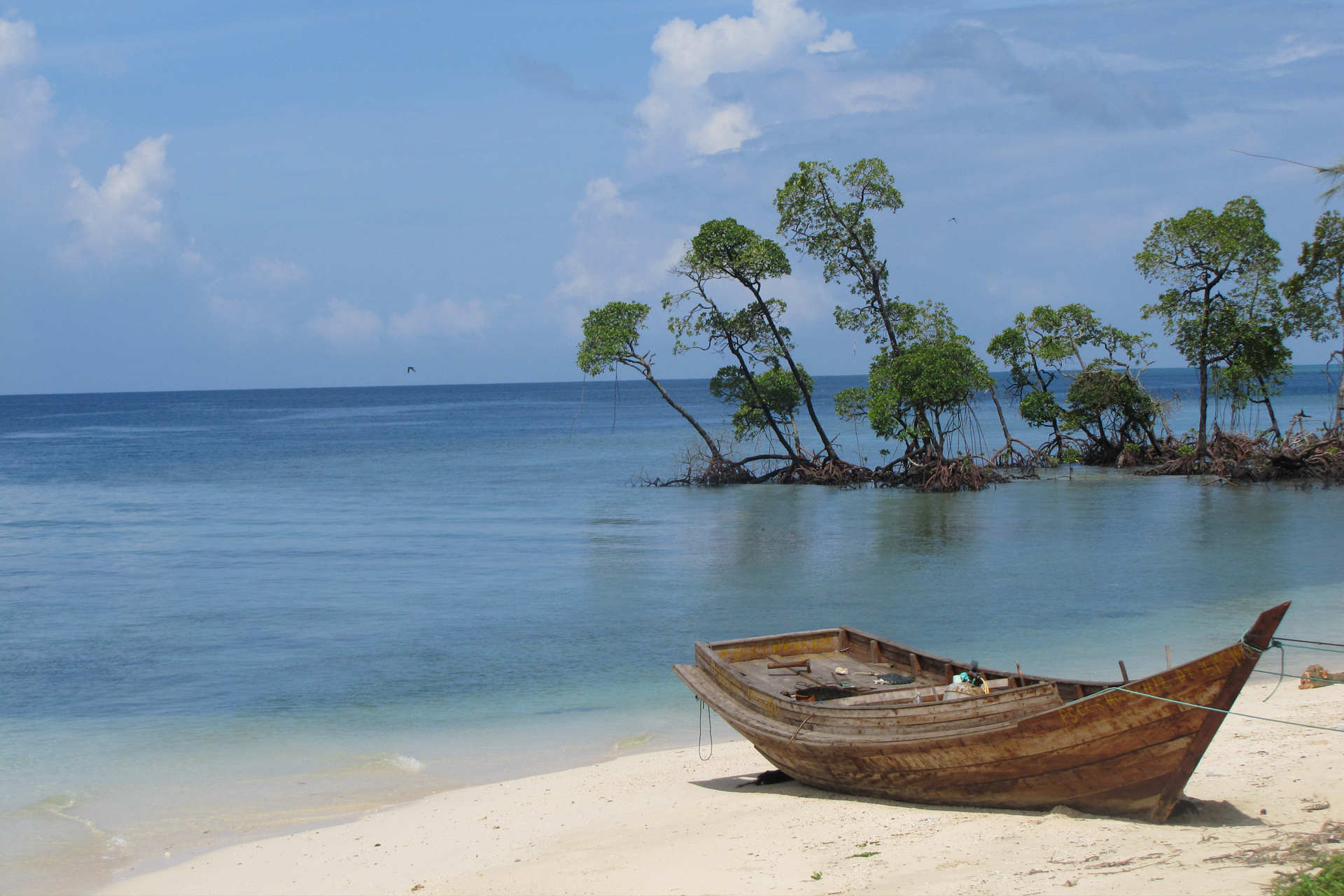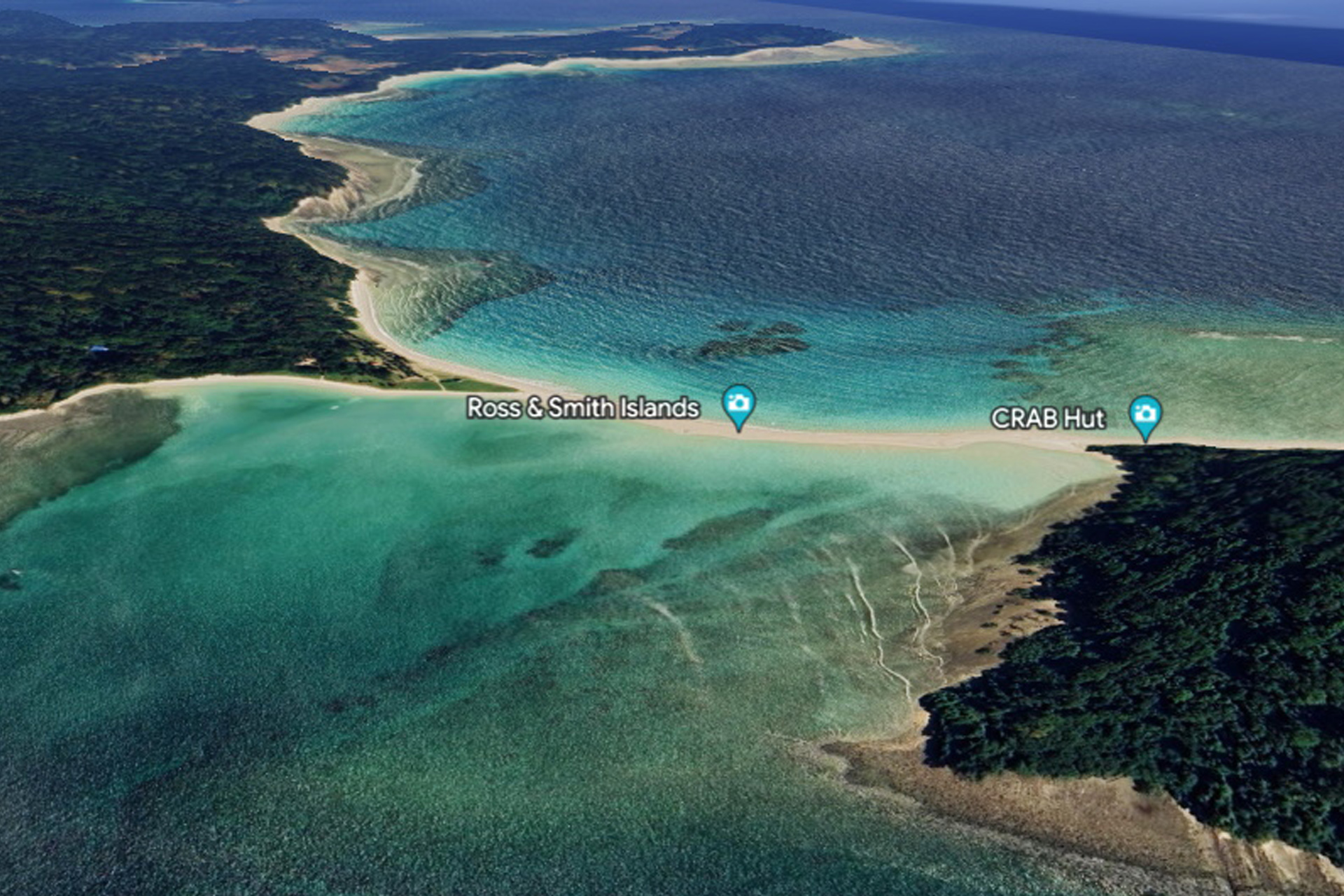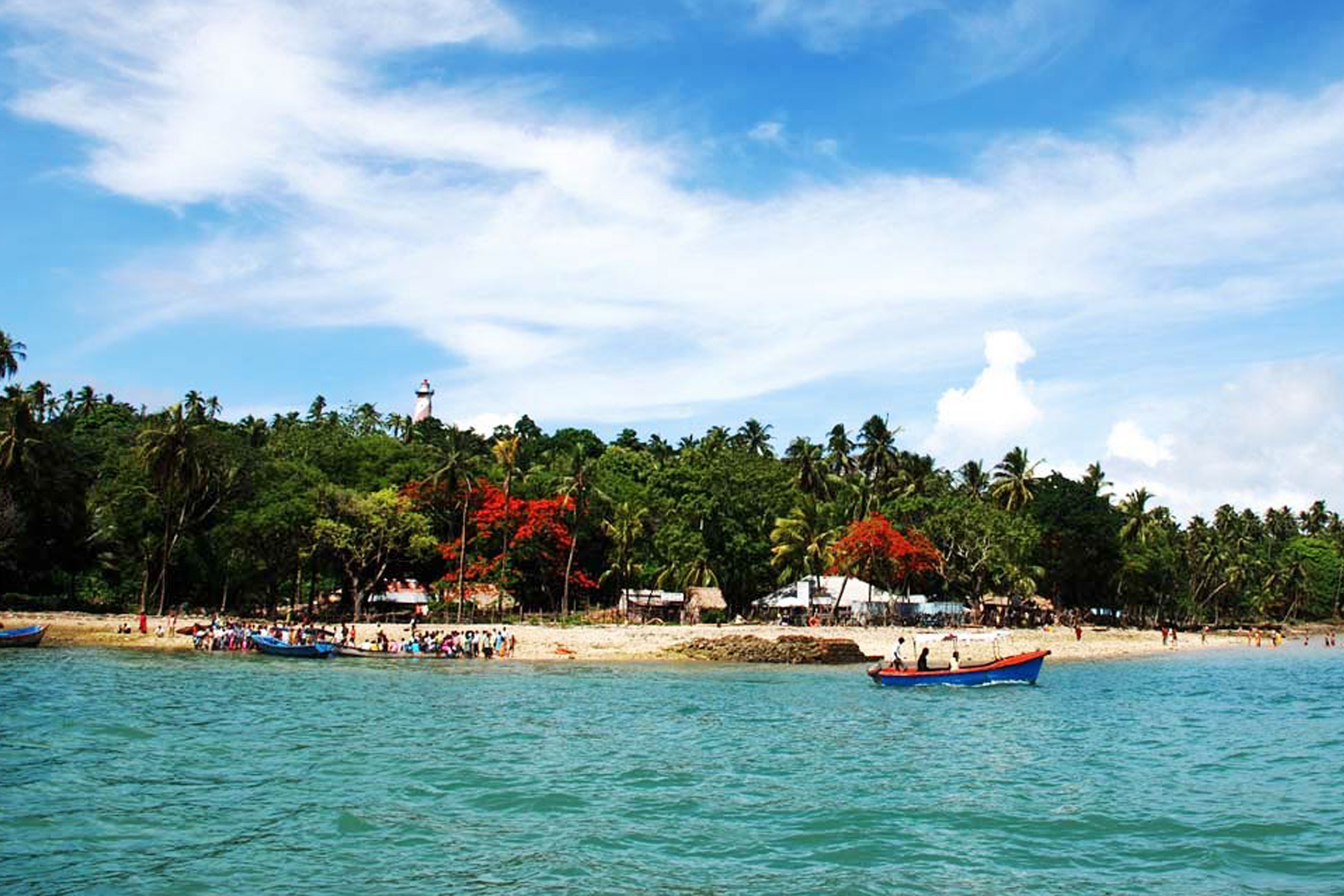
Best Tours
Havelock Island
Havelock Island (new official name: Swaraj Dweep), the most popular island among tourists, is located about 70 km north of the capital city, Port Blair. Swaraj Dweep (Havelock Island) has white sandy beaches, blue waters, and some of the best diving in the continent. Havelock(Swaraj) has well-justified fame for being a wonderland for travellers. Laze around on its secluded beaches, or explore its dense and serene mangroves; swim among exotic corals while you indulge in scuba diving or go out there and explore the wilderness on long jungle treks – Havelock has it all! The best places to visit in Havelock Island - Radhanagar Beach. Elephanta Beach. kalapathar Beach . Vijaynagar Beach
Best Tours
Neil Island
Neil Island is perfect for a peaceful time off. This Island has an area of 13.7 square kilometers only. Given the flat landscape and the small area, Neil can be bicycled around with minimal effort. With its laid-back vibe, and lucid charm the island is soothingly different from its neighboring Havelock. Neil Island is best suited for those who want to spend a relaxed time among long deserted beaches. With little bustle, few activities to take up, and few resorts, this island is best for those who want to explore the island’s villages. Spend quality time at the named after mythological characters from the Ramayana, or indulge in water sports in the crystal clear water – Neil Island is Andaman’s rustic masterpiece. Neil is a tiny but beautiful island located 37 km south of Port Blair. Neil Island is also known as the vegetable bowl of Andaman Islands; thanks to its climatic conditions the land is ideal for the cultivation of fruits and vegetables. Neil is connected to both Port Blair (1.5 hours) and Havelock (45 minutes) by private ferries and to Port Blair, Havelock, and Rangat by Government ferries. The Internet is mostly unavailable in Neil. If lucky, one can find patchy BSNL data network on phone.


Best Tours
Ross and Smith Island
Ross and Smith Island, It is located in Diglipur North Andaman.the majestic twin islands of Ross and Smith connected by a thin fifty meter long sand bar. This silky white sand bar descends inside the sea at times of high tide and surfaces up again during low tide. The bar divides the shallow swimming area on one side and some amazing snorkeling on the other. The warm waters are crystal clear and the untamed virgin beaches are the most picture perfect ones you will see on the islands. The best part is that the beach is seldom crowded and most of the time you can cherish the whole sight by yourself. Tropical forests surround the beach and the inner islands are a preferred place for nature trail hiking. Smith Island has limited facilities; spacious bamboo huts with plenty of shade, changing rooms and toilets can be found.
Best Tours
Ross Island
The island was discovered and settled by Daniel Ross in 1814. Ross Island is named after Daniel Ross. visit place – Jail, Church, Hospital, swimming pool etc. On 15 June 1996, the name was changed to ‘Lakhi by Island’ 30Dec 2018Modi ji is namedNetaji Subhash Chandra Bose Island. It is a small island which has a circumference of one mile (1.6 km) Ross Island (now known as Netaji Subhash Chandra Bose Island),Penal Colony was a convict settlement that was established in 1858 in the remote Andaman Islands by the British colonial government in India, primarily to jail a large number of prisoners from the Indian Rebellion of 1857, also known as the Indian Mutiny. With the establishment of the penal colony at Ross Island, the British administration made it the administrative headquarters for the entire group of Andaman and Nicobar Islands and built bungalows and other facilities on the site. This colony was meant as "manageable models of colonial governance and rehabilitation". The Chief Commissioner's residence was located at the highest point on the island. Over time, several other islands including Chatham and Viper were used for the penal colony. The penal colony became infamous as "Kalapani" or "black water" for the brutalities inflicted by the British authorities on the political prisoners from India, and most of whom had died by 1860 due to illness


Best Tours
Mount Harriet National Park
Mount Harriet National Park is a national park located in the Andaman and Nicobar Islands union territory of India. The park, established in 1969, covers about 4.62 km. “Mount Harriet” (383 meters )(1,257 ft), which is part of the park, is the third-highest peak in the Andaman and Nicobar archipelago next to “Saddle Peak” (732 meters) (2,402 ft) in North Andaman and “Mount Thullier” (568 meters) (1,864 ft) in Great Nicobar. In past, Mount Harriet served as the headquarters for the British Chief Commissioner “Loard Meyo” during the summer months. In 1872 8th feb, “Sher Ali pathan”, a soldier in the 1857 “Sepahi Bidroho” , he killed the “Lord Meyo” in Hope Tone. “Sher Ali pathan”, was hanged on viper Island in 11th March 1872. The park's well-known faunal species are Andaman wild pigs (an endangered species), saltwater crocodiles, turtles and robber crabs. The park is also a butterfly hotspot The picture on the back side of ₹ 20 is taken from Mount Harriet National Park. The park is named in commemoration of “Harriet C. Tytler”, the second wife of “Robert Christopher Tytler”, a British army officer, an administrator, naturalist and photographer, who was appointed Superintendent of the Convict Settlement at Port Blair in the Andamans from April 1862 to February 1864. Harriet is remembered for her work in documenting the monuments of Delhi and for her notes at the time of the Revolt of 1857 in India.

Best Tours
Tribal
The Andamanese and Nicobarese can be split into two broad tribal groups mainly based on their place of origin. The Andaman Islands are home to four ‘Negrito’ tribes whereas – the Great Andamanese, Onge, Jarawa and Sentinelese. Where as the Nicobar Islands are home to two ‘Mongoloid’ tribes – the Shompen and Nicobarese. The ‘Negrito’ tribes are believed to have arrived in the islands from Africa up to 60,000 years ago. All are nomadic hunter-gatherers, hunting wild pig and monitor lizard, and catching fish with bows and arrows. They also collect honey, roots and berries from the forest.The ‘Mongoloid’ tribes probably came to the islands from the Malay-Burma coast several thousand years ago. Jarawa tribe is one of the largest tribes in Andaman Islands. With a population between 250 to 400, the for centuries this tribe has shunned all interaction with outsiders and therefore there name means “The hostile ones” or “people of the earth”. The Jarawa are still at the primitive stage of life on earth. They entirely depend upon forest and sea for food. Wild boar and monitor lizard are consumed. Various kinds of fruit, honey and tubers are parts of their diet too. The jarawas of both sexes go complete naked. However some ornaments made with shells and palm leaves are worn by them but these are not in the sense to cover their nudity. This tribe has lived in the southeast part of Andaman but after the British regime they shifted to the western region of the island. They have forever been hunter gatherers in the true sense however things have changed since the 1990’s especially after the building of the old trunk road. The great Andaman trunk road is a 360 km long road that connects Port Blair to the western regions of Andaman. Though it proves beneficial for tourism and business, it has proved life-threatening for the Jarawas. This trunk road cuts through the jungles that are home to the Jarawa community.

Best Tours
Viper Island
“Viper Island” derives its name from the vessel H.M.S. Viper in which Lt. “Archibald Blair” came to Andaman and Nicobar Islands in 1789. The vessel, it is believed, met with an accident and its wreckage was found near the island. This small island was the site of the jail where the British used to imprison convicts and political prisoners. It has the ruins of a gallows atop a hillock. The jail was abandoned when the Cellular Jail was constructed in 1906. In any talk about Andaman and its role in the freedom struggle, it is the Cellular Jail that finds frequent mention. But, many years before the Cellular Jail was constructed, it was the jail at Viper Island that was used by the British to inflict the worst form of torture and hardship on those who strove to free the country from the British rule. The need for building a jail there was felt only after the British set up a penal settlement at Port Blair in 1858 to house political prisoners of the Indian Rebellion. Ross Island functioned as the headquarters of the penal settlement. Located near Port Blair, the construction of the Viper Jail was carried out during 1864–67. Lt. Col. Barnet Ford, the superintendent of the Penal settlement, supervised the work. Initially, a police inspector, a head constable, two sergeants, four class I constables and 30 class II constables were posted. Later on, the strength was raised gradually. Solitary cells, lock-ups, stocks and whipping stands characterized the Viper Jail. Women were also held. The conditions at the jail were such that the place got the notorious name, "Viper Chain Gang Jail." The warden of this jail often changed but inmates used to call the warden "The black mamba". Those who had challenged the might of the British authority were chained together and confined at night by a chain running through coupling of irons around their legs. It was at this jail that members of the Chain Gang were put to hard labour. Brij Kishore Singh Deo, popularly known as Maharaja Jagannath of Puri, was kept in the Viper Jail, where he died in 1879. The Jail has secured a permanent place in the history of the freedom struggle as it was here that Sher Ali, a Pathan from Peshawar, was hanged after he assassinated Lord Mayo, the Viceroy of India, on February 8, 1872 at Hope Town jetty, opposite Chatham Island. After the construction of the Cellular Jail in 1906, the Viper Jail's importance declined.[6] Today, the two-storied Jail building stands tumbled to the plinth level except for a portion of the roof with the outer wall dilapidated. A few birds which have built their nests inside the tomb of the gallows.

Best Tours
North Bay Island
Located near Port Blair, North Bay is a secluded island which spans over a relatively medium area and is generally visited by tourists on a day trip to both Ross Island and North Bay.The island is surrounded by crystal clear cyan colored water with a shallow shoreline that offers a magnificent underwater view. The beach is white sand and shaded by dense tropical trees with hints of huts and wooden benches to set the mood.Make sure not to get in the water without a guide as it is not usually allowed. This was done to protect the visitors from unwanted sea dwellers and protect the coral from interference.
.jpg)
Best Tours
Limestone Caves
The Limestone cave formations at Nayadera and the vast mangrove-covered creeks are the main attractions for tourists in Baratang. The island is known for limestones, which deposit themselves either above the soil or under the ground forming interesting formations and layers. You can easily get a boat at the Nilambur jetty, which will take you to the famous caves. On the way, you can admire scenic coastline covered with mangrove forests and you even pass through mangrove-covered canals making the ride more exciting. Once you reach the wooden jetty at Nayadera you will have to walk down for about 1.2kms to view this beauty of nature. The walls of caves here are covered with massive formations dangling from the ceiling like chandeliers. The water is constantly dripping from the ceiling making the stalactites and stalagmites shine and glow. The sad part of this site is that people visiting the caves are destroying these wonders of nature by littering and signing names on the ancient formations.
